Happy Sunday! I hope everyone has had a nice weekend so far. Mine involves a combination of work, study, and play — work for clients, studying in the form of my first few forays into preparing for final exams, and play in the form of getting my Christmas tree up. The arrival of a tree always seems to make the holiday season feel real, and I’m so happy to have it. As you’ll see tomorrow and on Tuesday, there have been plenty of fragrant holiday baking smells around here, too!
Here are some of my food picks for this week: a collection of simple, colorful, and enticing early winter recipes.
I’ve learned all about satsumas from my best friend, who lives in the Big Easy. And I’m loving Elizabeth’s bright, colorful roasted fennel and satsuma orange salad on Brooklyn Supper. I’m sure it would work nicely with any orange variety. Elizabeth calls it a “happy salad” for gray or chilly weather, and I can certainly see how it would lift the spirits.
Another warming, wintery recipe: Sarah’s delicious breakfast quinoa with chai-spiced almond milk and cinnamon. I love the contrast of delicate quinoa grain with hearty nuts and coconut flakes, as well as all of the fragrant baking spices.
The most perfect wintery salad: Laura’s beautiful broccoli rabe kale harvest salad from The First Mess. I love the idea of using broccoli rabe as a salad base (I only ever sautee it, which isn’t very creative), and the addition of farro gives the salad plenty of substance. The cranberry orange dressing is delightfully festive, too.
It’s hard to imagine a dish that’s heartier or more perfectly suited to the season than Lindsey’s oh-so-creative black lentil and sweet potato chili with kabocha biscuits. Bookmark this recipe for the biscuits alone!
Finally, I’ve got my eyes on Tessa’s glorious looking chocolate-dipped hazelnut teff cookies as edible gifts. They’re wholesome as well as decadent, and the chocolate dipped sides give them a super festive appearance. If I don’t make them to give to friends, I’ll be happy to keep them all to myself!
Reads
1. First, big news in the quest to find new methods of scientific and medical research that don’t rely on animal testing. NIH is ending its support for invasive research on chimpanzees. In a memo leaked this week, agency head Francis Collins says that a colony of 50 chimps it had planned to keep in reserve for research—after retiring the rest—is no longer needed.
The news follows what seems to be a long process of reevaluation of the appropriateness of testing on chimps on NIH’s part. I found it interesting that one ecologist in the UK objects to this decision because it means that it will be harder to test an Ebola vaccine designed to protect wild–and endangered–gorillas and chimpanzees. But for the chimps who have been confined to a laboratory for all or most of their natural lives, this is an important step toward freedom and recognition of autonomy.
2. More news in animal rights: a new study, published in the Proceedings of the Royal Society B, suggests that fish demonstrate consciousness and emotion.
Fish are often regarded as lacking sentience, which, coupled with the fact that we don’t necessarily regard them as being “cute” in the same way we do mammals, may explain why many people experience less moral tension or conflict around fish consumption than they do meat consumption.
The study found that zebrafish responded to stress with what’s called an “emotional fever,” or rise in body temperature. Fish were kept in tanks and then confined to nets; the fish who had been confined sought out warmer waters and raised their body temperatures by about 2–4°C. The authors conclude: “While the link between emotion and consciousness is still debated, this finding removes a key argument for lack of consciousness in fishes.”
3. A pretty fascinating article about what the dust in your home says about you–or rather, how human inhabitants will influence the microbial populations in dust particles.
4. I absolutely loved reading this piece in NPR’s The Salt, entitled “How Suffragists Used Cookbooks as a Recipe for Subversion.” I’d never thought to connect the two, but the article reveals the connections between the suffragist cause and printed recipes. The author, Nina Martyris, writes,
“Today, some might ask: What were feminists doing printing cookbooks? Wasn’t their whole movement aimed at empowering women beyond home and hearth?
‘Women used what they knew, what they could to champion their causes,’ eminent culinary archivist Jan Longone explained…’If that meant baking a cake or cooking a dinner or writing a cookbook, they did that. I need not remind the audience that for most of the 19th century, a woman had no control over her own money, her own children, her own destiny.’
But, as Longone points out, these cookbooks were also a strategic rebuttal to the snide jokes and hurtful innuendo directed against suffragists, who were painted as neglectful mothers and kitchen-hating harridans, busy politicking while their children starved. The assertion these books sought to buttress was that ‘good cooking and sure voting went hand in hand,’ to quote the 1909 Washington Women’s Cook Book, which opened with the couplet: ‘Give us the vote and we will cook / The Better for a wide outlook.'”
It also occurred to me that so much of the suffragist movement’s power originated in women coming together and trading ideas, and that food or cooking may have been a part of that social cohesion and convergence. I wonder if the culinary arts aren’t generally entangled with female empowerment, even in this day and age: for instance, it seems to me that the food blog sphere is also a remarkably concentrated area of female entrepreneurship.
In any case, the article is well worth reading!
5. Finally, a troubling article about the ways in which weight bias in the medical profession can lead to misdiagnoses or failure to treat disease. The author, Harriet Brown, relays the stories of women whose ailments–which ranged from a separated shoulder, a broken leg, a blood pressure spike in response to medication, and even lung cancer–were all attributed to the patients’ BMIs. Now that obesity has been officially classified as a disease, it may be that too many health care providers regard overweight as the beginning and the end of an explanation of symptoms, rather than taking the time to listen carefully to symptoms and offer comprehensive diagnostic care.
While it’s certainly true that weight can impact health and increase the likelihood of certain diseases, the fact remains that BMI and weight don’t tell all of a patient’s story. And there is never a place for fat-shaming in medical care, though Brown’s profile subjects were often subjected to it. In all, this article is a powerful call for health care practitioners to demonstrate sensitivity and work through potentially harmful weight biases in the course of their care.
And that’s it for today, friends. I wish you all a relaxing Sunday. Tomorrow, in place of a regular Menu Plan Monday post, I’m sharing a special dessert that’s part of a blog party to support coffee growers in Malawi (organized by the lovely Kimberly of The Little Plantation). And on Tuesday, a post that I’m so excited to share: a recipe collaboration with one of my favorite local cafes, featuring a vegan gingerbread recipe that’s just about perfect. In all, you’ll have plenty of edible gift ideas at your fingertips. Till soon!
xo
You might also like
The first time self-soothing was explained to me, it was by a friend who had her hands full taking care of a new baby. Self-soothing, she said, is when a baby develops the capacity to calm his or herself down. It’s seen as being key to uninterrupted nights of sleep for parents, since it allows babies to get back to rest if they should happen to wake up during the night. A little while later, when I was exploring resources on coping with…
Happy Sunday, friends! I hope you’ve been enjoying the weekend so far, and if you have tomorrow off, I hope you’re resting and enjoying a little extra free time. I’ll be working with clients on Monday, but with exams behind me, I’m taking some time this weekend to catch up with a few friends and to have a much needed date night with Steven (between work and school, he and I have been ships crossing this week!). Here are some reads and food…
Happy Saturday, everyone. I’m happy to see that the slow cooker chili was a hit (a few folks have already let me know, via Instagram and FB, that they made it, and they seem to have loved it as much as I have). I’ll definitely be posting more slow cooker recipes in the coming year, as that kitchen appliance is quickly becoming a grad school lifesaver! (And I’ll always try to give a stovetop version of things, too). By the way, if you make…
Happy Valentine’s Day, friends. It’s the coldest Valentine’s on record here in NYC, and I’ve been listening to a howling wind outside since I woke up this morning. I’ll be staying inside as much as I possibly can today, catching up on school and work, probably baking something sweet for me and Steven as part of our Valentine’s Day at home, and whipping up a batch of my lentil sloppy Joe’s for a date night dinner. I hope everyone who’s reading from the Northeast is…

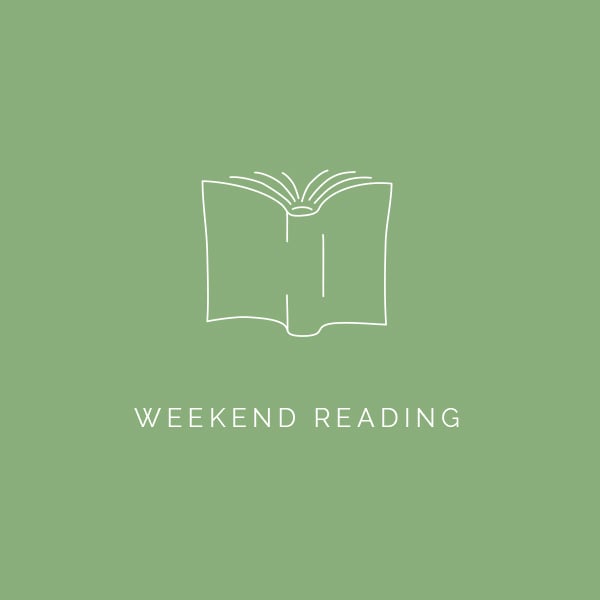
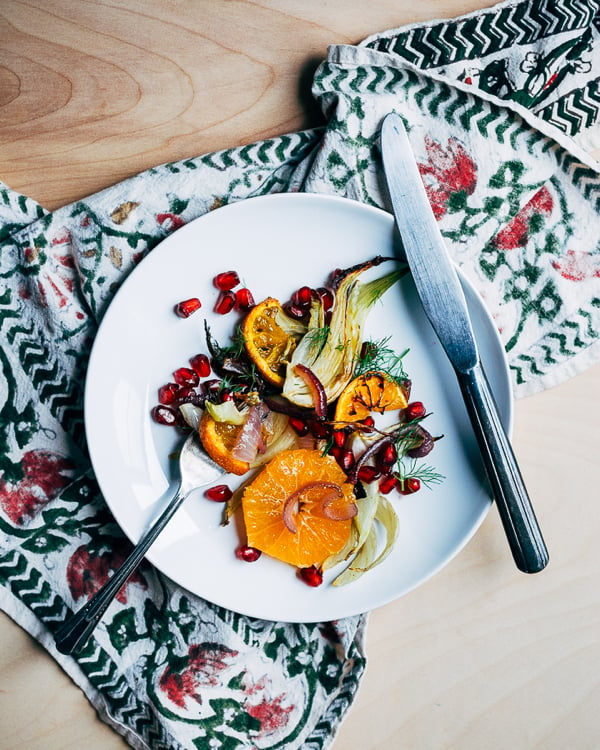
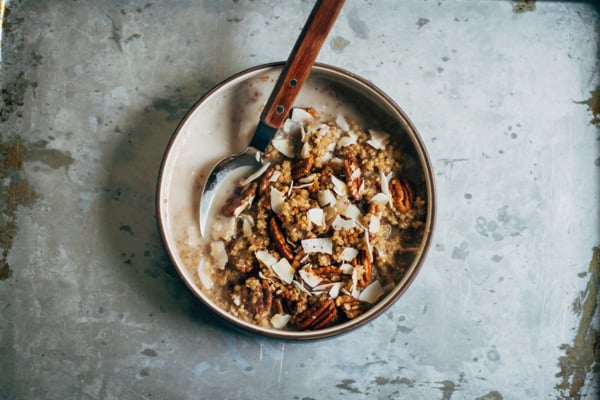
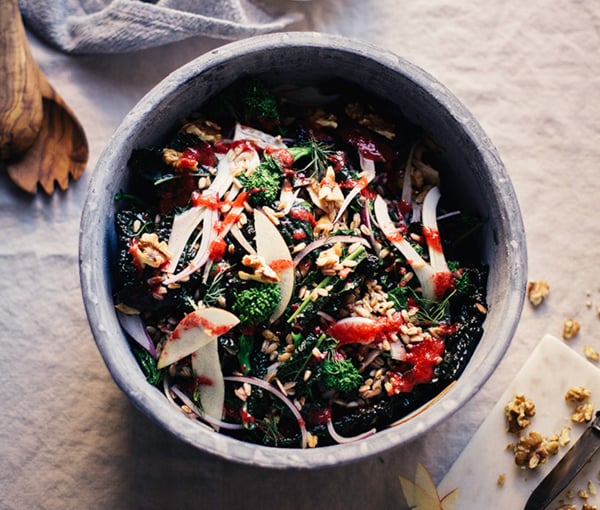
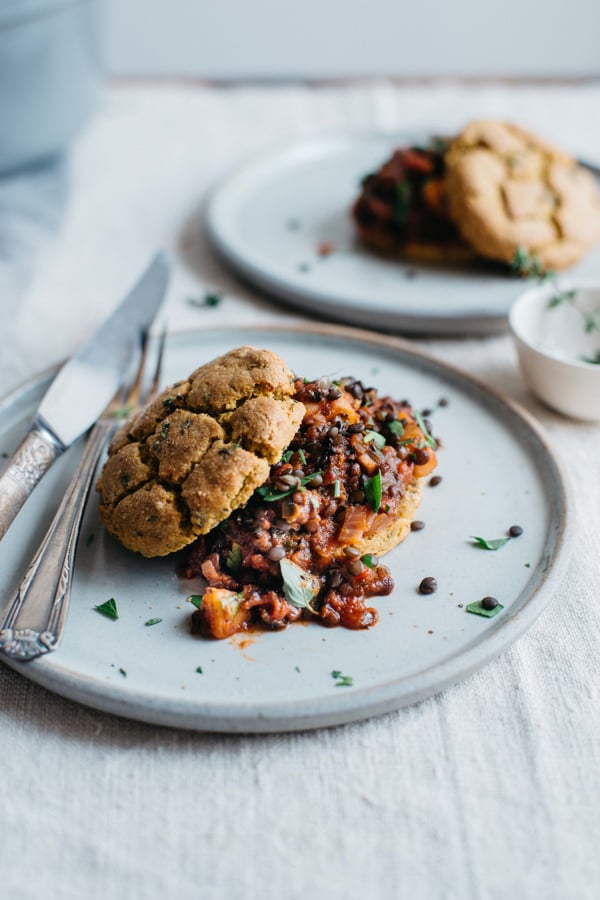

Leave a Comment
HI Gena–what a bountiful offering this weekend reading is! I love the satsuma fennel salad. Will definitely do something like that. And the reading is wonderful. I “babysat” goldfish at my house for a few years and I can vouch for them being sentient. My favorite, the smallest, little boy, would even let me pet him and eat boiled peas out of my hand. I was devastated when my nursing efforts could not save him from a bowel obstruction. They all were very aware of all of us and of the fire in the masonry stove. They swim to the edge of the aquarium, and literally watch the fire from the nearest corner. My animal behaviorist friend confirmed what your article suggests and more–fish can learn!
Also great article about cookbooks and suffrage. I think food knowledge is in the female DNA. Even orca matriarchs that don’t breed anymore stick around for a long time showing their juniors how to gather food in lean hunting times. (I wrote about this once in a blog post.) So here’s to how our recipes empower and connect us!!
Enjoy your tree and looking forward to your gingerbread recipe! xo